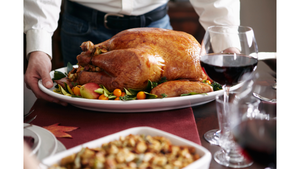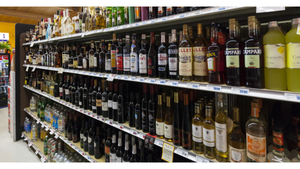SOME ITEMS CAN BE SWEET ALL DAY, BROKER SAYS
DALLAS -- Certain baked goods can be made and merchandised throughout the day, provided that bakeries time the manufacturing schedule to coincide with peak traffic periods and buying windows, according to an expert who spoke on the subject at the biennial convention here of the North American Association of Food Equipment Manufacturers, Chicago."Bakery is [easiest] to understand in terms of dayparts,"
October 18, 1999
ROBERT VOSBURGH
DALLAS -- Certain baked goods can be made and merchandised throughout the day, provided that bakeries time the manufacturing schedule to coincide with peak traffic periods and buying windows, according to an expert who spoke on the subject at the biennial convention here of the North American Association of Food Equipment Manufacturers, Chicago.
"Bakery is [easiest] to understand in terms of dayparts," said Don Poulsen, chief executive officer of FSI-Dallas, a full-service food-service brokerage operating in north Texas. "Starting with the early morning, you want to have your items hot and ready to go when the doors open."
Popular items in Texas include biscuits, scones and cinnamon rolls, as well as breakfast pizzas, sandwiches and croissants, he said. Bakery operators who excel at these items should incorporate them into the rest of the day's mix, since they can potentially sell throughout the day, even if fillings or toppings might change to reflect the particular meal time.
Taking cinnamon rolls as an example, Poulsen said that cutting them into different sizes or different shapes as the day progresses creates a "new" item in the eyes of the consumer, even though they may have originated from the same batch of dough.
If daily merchandising isn't feasible or desired, the rolls can be signaturized for seasonal promotions. In one example, Poulsen cut a premade log of dough in such a way that would cause the edges to "flute" into a Christmas wreath shape after proofing and cooking. In this case, the icing could be colored green and red to finish.
Then, there are biscuits. "In Texas, many operations are judged by the quality of their biscuits and gravy," Poulsen said. "If you bake in the mid-morning, you will sell in the mid-morning -- cinnamon rolls, biscuits, doughnuts."
The mid-morning daypart is still ideal to sell these traditional "breakfast" items because of corporate meetings, coffee parties and similar pre-lunch events. The key is to let customers know you have the ability to supply their needs and can deliver fresh-baked quality goods.
"All of these items that I had earlier in the day apply here. My point here is solution selling," he said.
Using a daypart strategy to build bakery sales not only causes operators to look differently at their merchandising techniques, but also the equipment used to make the products.
"You don't want to shut that oven off at nine in the morning and let it sit there idle for the rest of the day," Poulsen said. "Make that oven work for you. Put these items in and let that aroma be caught."
Moving into lunch, bagels might be used for bagel sandwiches, pizza crust that held scrambled eggs and sausage now holds tomato sauce and cheese. And some items, like the cinnamon buns and biscuits, can stay on as is, since many people now eat breakfast for lunch, Poulsen observed.
"I put everything we had on the breakfast menu, and we come through mid-morning, and the majority of those items are still on the menu," he said. "The only thing we've done is moved it up."
Some products are even versatile within a single daypart. For example, some premanufactured pizza doughs can be baked without toppings in such a way that they puff into pita-like shells that can be cut in half and filled with a variety of meats and greens.
Dinner brings more options in terms of pizza, which can now be topped with more gourmet-like items to differentiate it from the lunch daypart menu, said Poulsen. The same crust can now be filled and folded to create strombolis and calzones. Likewise, croissants and biscuits can be merchandised as alternatives to plain dinner rolls. While they are all the same product as served in the morning and at lunch, they can be successfully merchandised in the evening provided they are made fresh just as the afternoon rush hour fills the store with hungry people looking for dinner ideas, Poulsen stressed.
The final daypart -- after hours -- more closely resembles the breakfast menu, since people have already had their final large meal of the day. That doesn't mean they're done snacking, however. Scones, cinnamon rolls, filled pastries, cookies and cobblers are consumer favorites, Poulsen said.
To succeed with daypart merchandising, Poulsen said, it's critical to put production up front in consumers' faces. Make sure they can see and smell what's being created.
"Don't hide what you're doing behind a screen," he said. "Get out there and show them and give them samples."
Some bakeries may not have the labor or the level of management expertise to accomplish daypart selling using scratch ingredients, he said. For those operations, sourcing from a quality manufacturer of premade doughs and mixes is a viable option, since it frees the bakery to concentrate its limited resources on selling the product.
"There are many, many opportunities for mixes and technological support from the [baked goods] area of the business," said Poulsen.
About the Author
You May Also Like




